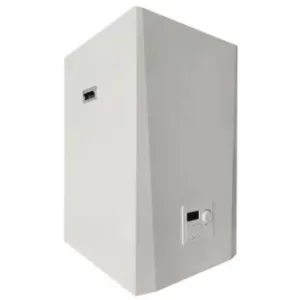- Afrikaans
- Albanian
- Amharic
- Arabic
- Armenian
- Azerbaijani
- Basque
- Belarusian
- Bengali
- Bosnian
- Bulgarian
- Catalan
- Cebuano
- China
- China (Taiwan)
- Corsican
- Croatian
- Czech
- Danish
- Dutch
- English
- Esperanto
- Estonian
- Finnish
- French
- Frisian
- Galician
- Georgian
- German
- Greek
- Gujarati
- Haitian Creole
- hausa
- hawaiian
- Hebrew
- Hindi
- Miao
- Hungarian
- Icelandic
- igbo
- Indonesian
- irish
- Italian
- Japanese
- Javanese
- Kannada
- kazakh
- Khmer
- Rwandese
- Korean
- Kurdish
- Kyrgyz
- Lao
- Latin
- Latvian
- Lithuanian
- Luxembourgish
- Macedonian
- Malgashi
- Malay
- Malayalam
- Maltese
- Maori
- Marathi
- Mongolian
- Myanmar
- Nepali
- Norwegian
- Norwegian
- Occitan
- Pashto
- Persian
- Polish
- Portuguese
- Punjabi
- Romanian
- Russian
- Samoan
- Scottish Gaelic
- Serbian
- Sesotho
- Shona
- Sindhi
- Sinhala
- Slovak
- Slovenian
- Somali
- Spanish
- Sundanese
- Swahili
- Swedish
- Tagalog
- Tajik
- Tamil
- Tatar
- Telugu
- Thai
- Turkish
- Turkmen
- Ukrainian
- Urdu
- Uighur
- Uzbek
- Vietnamese
- Welsh
- Bantu
- Yiddish
- Yoruba
- Zulu
Aug . 14, 2024 14:53 Back to list
Exploring the Use of Sodium Silicate in Sand Casting Applications Across China Industries
Sodium Silicate Sand Casting in China An Overview
Sodium silicate sand casting is a well-established technique in metal casting that has gained significant traction in China. This process, leveraging the properties of sodium silicate as a binder for sand molds, offers several advantages over traditional methods. As China continues to be a leading player in global manufacturing, the utilization of sodium silicate in sand casting reflects its commitment to innovation and efficiency in production.
Process Description
The sodium silicate sand casting process involves mixing fine silica sand with liquid sodium silicate, which acts as a binder. This mixture forms a mold when it is packed around a pattern. One major advantage of this approach is the ability to create complex shapes without the need for heavy investment in metal molds. Once the mold is formed, it is cured using carbon dioxide gas, which enhances the strength of the mold, making it capable of withstanding the high temperatures of molten metal.
After curing, the pattern is removed, creating a cavity for the metal to be poured into. This method not only allows for intricate designs but also ensures that the surface finish of the cast product is superior. The sodium silicate process is particularly well-suited for producing castings in iron and aluminum, both materials commonly used in a variety of industries, such as automotive, aerospace, and machinery.
Advantages of Sodium Silicate Sand Casting
One of the foremost benefits of sodium silicate sand casting is its environmental friendliness. Unlike traditional sand casting methods that rely on phenolic resins, sodium silicate does not produce harmful byproducts. This makes it an attractive option for companies looking to reduce their environmental impact and comply with increasingly stringent regulations.
china sodium slicate sand casting

Furthermore, sodium silicate molds are highly durable and can withstand multiple uses. This durability leads to cost savings over time, as the molds do not need to be replaced as frequently as those made from conventional materials. Additionally, the quick curing time associated with sodium silicate allows for faster turnaround in production, meeting the demands of modern manufacturing schedules.
Applications and Market Potential
In China, sodium silicate sand casting has found applications in various sectors. The automotive industry, for instance, benefits from the rapid design-to-manufacturing capabilities of this casting method. With an increasing demand for lightweight yet durable components, manufacturers are turning to sodium silicate sand casting to create engine blocks, transmission housings, and other critical parts efficiently.
Moreover, as China's focus shifts towards high-end manufacturing and smart technologies, the market for advanced casting processes, including sodium silicate sand casting, is expected to expand significantly. The technology’s compatibility with additive manufacturing techniques presents further opportunities, enabling more flexible production methods that can accommodate customized designs without extensive retooling.
Conclusion
Sodium silicate sand casting stands out as a pioneering technique within the metal casting industry in China. Its ecological benefits, cost-effectiveness, and ability to produce complex shapes make it a preferred choice for manufacturers. As the industry evolves, the combination of traditional craftsmanship with innovative techniques such as sodium silicate casting is likely to solidify China's position as a global leader in manufacturing. With ongoing research and development, the future of sodium silicate sand casting looks promising, paving the way for more sustainable and advanced manufacturing practices in various fields.
-
Premium Cast Iron Water Main Pipe: Durable, Corrosion-Resistant
NewsAug.03,2025
-
Durable Cast Iron Water Mains | AI-Optimized Systems
NewsAug.02,2025
-
High-Efficiency Propane Boiler for Baseboard Heat | Save Energy
NewsAug.01,2025
-
Premium Source Suppliers for Various Gray Iron Castings
NewsJul.31,2025
-
Durable Cast Iron Water Main Pipes | Long-Lasting
NewsJul.31,2025
-
High-Quality Cast Iron Water Main Pipe for Durable Infrastructure
NewsJul.30,2025


